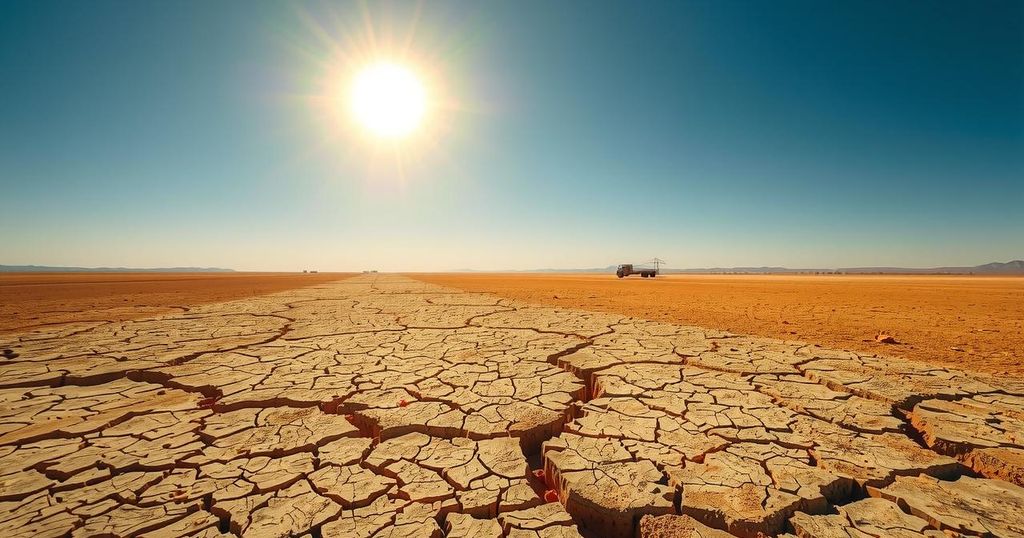Record Heatwave Sweeps Northern India as Summer Arrives Early

Northern India is facing record high temperatures as an early heatwave hits, with cities like Barmer and Delhi recording extreme values. The IMD has issued severe heatwave alerts for multiple states, advising the public to take precautions. Climatological factors are contributing to these conditions, which pose risks to health and agriculture.
Northern India is currently experiencing a record heatwave, with unusually high temperatures arriving earlier than expected this summer season. The Indian Meteorological Department (IMD) reported that numerous cities have recorded temperatures soaring above 40 degrees Celsius, indicating potential heatwave conditions well in advance of peak summer. This week alone, 27 weather stations in the western region recorded temperatures above 43 degrees Celsius, with 19 locations classified as experiencing severe heatwaves.
Delhi’s Safdarjung recorded a temperature of 41 degrees Celsius, while Barmer in Rajasthan reached an alarming 46.4 degrees Celsius. This temperature marks a record for the region, being nearly 7 degrees above the seasonal average. The IMD defines a severe heatwave as when at least two weather stations in a region exceed 45 degrees Celsius.
The IMD has issued warnings that heatwave conditions are expected to persist across northern, eastern, central, and western India, particularly affecting states like Delhi, Rajasthan, Gujarat, Madhya Pradesh, Maharashtra, and Odisha. Authorities have issued a yellow alert across multiple regions, indicating that while the heat remains tolerable, it poses health risks for vulnerable populations such as infants, the elderly, and those with chronic health issues.
Recommendations for the public include avoiding prolonged exposure to the heat, wearing lightweight and breathable cotton clothing, and using hats or umbrellas for outdoor activities. Traditionally, the heatwave season in India begins in April, yet temperatures recorded this month are significantly higher than usual, a trend exacerbated by climatic changes resulting in slower winds and clear skies, which intensify surface heating.
Mahesh Palawat from Skymet indicated that the upcoming period would see continued declines in wind speeds alongside clear skies, further heightening temperatures. The IMD previously noted expectations for an intense heatwave summer with above-normal temperatures across the country, with certain states projected to face up to 11 days of heatwave conditions.
Concerns extend beyond public health; this early heatwave also threatens agricultural yields, particularly wheat crops, marking the third consecutive year of risk. The extreme conditions last year resulted in unprecedented heat-related health incidents, with reports indicating over 40,000 suspected heatstroke cases. The government recorded substantial fatalities due to heat, although independent estimates suggest the actual figures may be significantly higher.
The early onset of a record heatwave across northern India, with high temperatures well above the seasonal norm, raises substantial public health and agricultural concerns. With warnings in effect across multiple states and key measures recommended for vulnerability reduction, the impact of these heat conditions could be profound. The situation underlines the growing unpredictability of climate-related events and emphasizes the importance of public awareness and preparedness in responding to severe weather events.
Original Source: www.independent.co.uk







